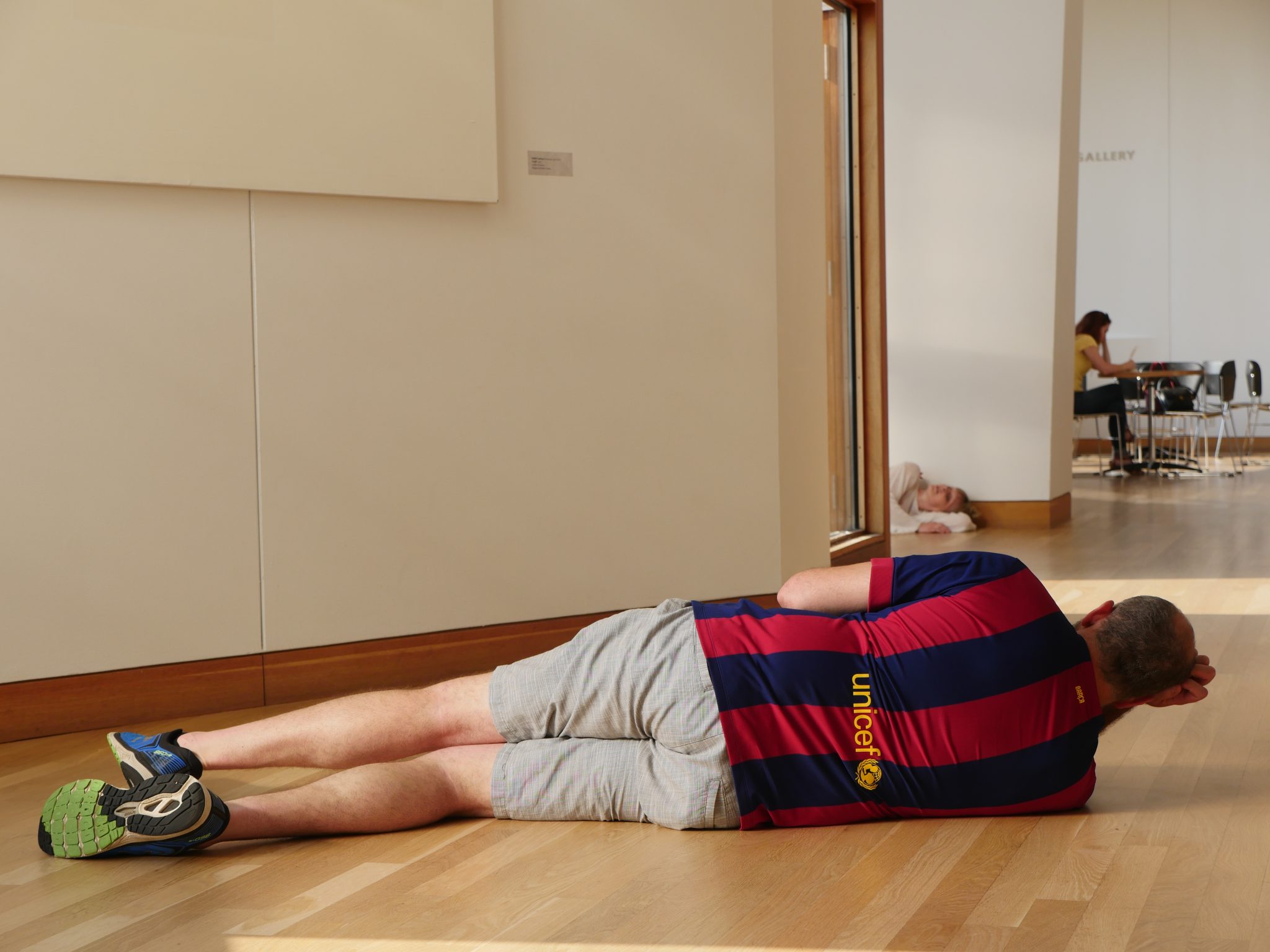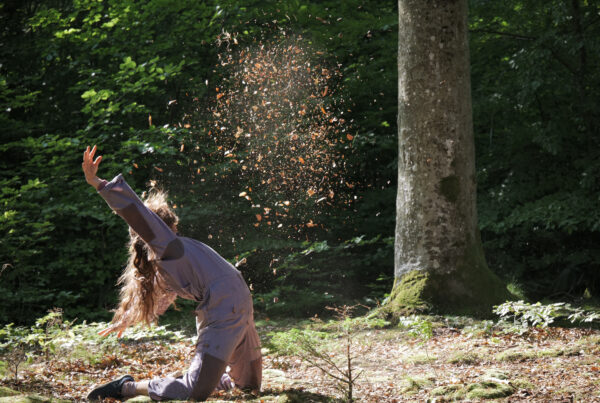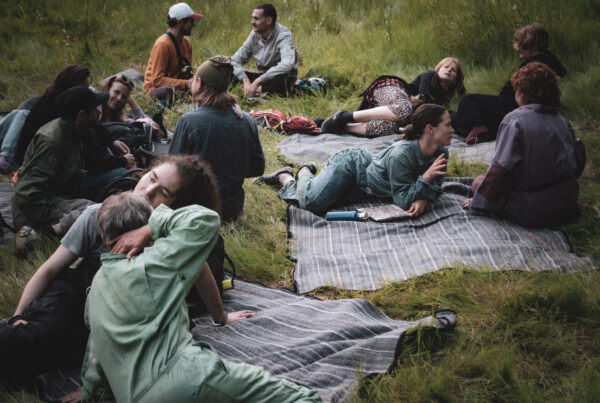action movie found one dance and one spectator exploring the museum together. The dancer controlled the action, framing the experience for the viewer who, eyes closed, was led by the hand through the museum. Vision is our dominant senses, and we often anesthetize the others to focus more attention to optical sensations. Action movie foregrounded the fact by radically limiting vision to enable other senses to bloom. This too is an ethical relation. The dancer guided the viewer toward a situation and asked them to open their eyes, confronting the viewer with an edited reality. Viewers were laid upon the ground, given new vantage points at a sculpture, while others witnessed duets with folding chairs or their own shadows. Yet the work was also rich when experienced with your eyes closed merely listening to the dancer move around your body, or feeling the hot summer air , slipping past a cracked door, caressing your face. As a non-dancer, this work, succeeded n highlighting the rich embodied experiences rather than privileging the optical. These may not be new lessons to keep forgetting the ways in which a work can touch us.
Damon Stanek



